
Journal of Gaming and Virtual Worlds
Scope & Guideline
Advancing Research in Virtual Reality and Gaming.
Introduction
Aims and Scopes
- Cultural and Social Impact of Games:
Investigates how video games influence and reflect societal values, norms, and behaviors, including themes of inclusivity, diversity, and representation. - Game Design and Mechanics:
Analyzes the intricacies of game design, including mechanics, aesthetics, and player interactions, often employing case studies to illustrate these concepts. - Narrative and Rhetoric in Gaming:
Explores the storytelling aspects of games, examining how narratives are constructed and their rhetorical effects on players, especially regarding mental health and morality. - Play and Experience:
Focuses on the phenomenology of gaming and the player experience, including emotional responses, social dynamics, and the ethics surrounding gameplay. - Technological and Economic Aspects of Gaming:
Addresses the implications of technological advancements in gaming and the economic structures that support the gaming industry, including user-generated content, copyright issues, and gamification.
Trending and Emerging
- Social Dynamics in Gaming:
An increasing emphasis on the social aspects of gaming, particularly in multiplayer contexts, showcases the importance of community and social expressiveness among players. - Mental Health and Gaming:
Research focusing on mental health representations and player experiences is gaining traction, indicating a growing interest in the psychological implications of gaming. - Diversity and Inclusivity:
There is a notable rise in studies addressing diversity and inclusivity within gaming narratives and communities, reflecting broader societal movements towards representation. - Game Localization and Globalization:
An emerging focus on the localization of games and the cross-cultural implications of gaming indicates an interest in how games are adapted for different audiences globally. - User-Generated Content and Copyright:
Research on the implications of user-generated content and related legal issues is trending, highlighting the evolving relationship between players and game developers.
Declining or Waning
- Traditional Game Genres:
Research centered on conventional game genres such as platformers and shooters has seen a decline, as scholars increasingly explore innovative and hybrid genres. - Nostalgia in Gaming:
The examination of nostalgic themes in gaming, while still relevant, has become less frequent, suggesting a shift towards contemporary and future gaming experiences. - Single-Player Game Experiences:
The focus on single-player gaming narratives and mechanics is waning as more research gravitates towards multiplayer and social gaming dynamics. - Historical Gaming Analysis:
While historical perspectives were once a significant focus, there seems to be a reduction in studies specifically analyzing historical games, likely as the field moves towards more current and emergent trends.
Similar Journals
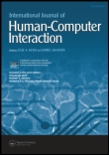
INTERNATIONAL JOURNAL OF HUMAN-COMPUTER INTERACTION
Innovating the Interface of Human and MachineINTERNATIONAL JOURNAL OF HUMAN-COMPUTER INTERACTION, published by Taylor & Francis Inc, stands at the forefront of research within the interdisciplinary fields of human-computer interaction, human factors, and ergonomics. Since its establishment, the journal has consistently contributed to advancing the understanding of the interactions between people and computers, making it a vital resource for researchers, professionals, and students alike. With an impressive impact factor reflecting its high citation rate, this journal is recognized as a Q1 publication in both Computer Science Applications and Human Factors and Ergonomics categories for 2023, showcasing its stature within the academic community. Additionally, it boasts a commendable ranking within the top percentiles in key areas on Scopus, ensuring that the research published here reaches broad scholarly audiences. Available in traditional subscription format, the journal covers seminal studies from 1989 to 2024, reflecting ongoing innovation in technology and its applications in everyday life, and thus serves as an essential platform for pioneering research that shapes the future of user experience.

Technoetic Arts
Innovating Art's Future in a Rapidly Evolving LandscapeTechnoetic Arts, an influential journal published by INTELLECT LTD, serves as a vital platform for interdisciplinary research at the intersection of the arts, philosophy, and technology. Established in 2003, this journal has evolved to encompass a diverse range of innovative topics, while focusing on the critical examination of art's future amid rapid technological advances. With an ISSN of 1477-965X and E-ISSN 1758-9533, it appeals to researchers, professionals, and students interested in explorations within the fields of Computer Science Applications, Human-Computer Interaction, Philosophy, and Visual Arts and Performing Arts. Although currently not open access, Technoetic Arts is recognized for its rigorous scholarship, as evidenced by its Scopus rankings—achieving the 75th percentile in Visual Arts and Performing Arts. The journal operates from its base in the United Kingdom, offering a unique lens through which contemporary techno-artistic dialogues are examined and promoted. As it aims for continuous improvement in academic merit and relevance, Technoetic Arts remains an essential resource for anyone looking to engage with the transformative power of technology in art.
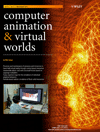
COMPUTER ANIMATION AND VIRTUAL WORLDS
Advancing Knowledge at the Intersection of Art and Science.COMPUTER ANIMATION AND VIRTUAL WORLDS, published by Wiley, is a pivotal journal in the fields of Computer Graphics and Computer-Aided Design, as well as Software. With a focus on the intersection of technology and creativity, the journal provides a platform for researchers and professionals to share innovative studies, new methodologies, and insights that shape the future of computer animation and virtual environments. Currently holding a Q2 category in Computer Graphics and a Q3 in Software for 2023, it ranks #63 out of 106 in its niche, highlighting its influence and relevance in the academic community. Though the journal operates under a subscription model, it also offers options for open access, ensuring that a broader audience can engage with groundbreaking research. The journal has been publishing continuously since its inception in 2004 and looks forward to further contributions as it moves towards its 20th anniversary in 2024. Whether you are a seasoned researcher, an industry professional, or a student eager to explore these dynamic fields, COMPUTER ANIMATION AND VIRTUAL WORLDS is an essential resource for advancing knowledge and innovation.

Journal on Multimodal User Interfaces
Advancing User Experience Through Multimodal InsightsJournal on Multimodal User Interfaces, published by Springer, serves as a vital platform for scholarly exchange in the rapidly evolving fields of Human-Computer Interaction and Signal Processing. Established in 2008 and continuing through 2024, this journal maintains a high profile in academia, currently ranking in the Q2 category for both fields, indicating its significant contribution to ongoing research and practical applications. With its Scopus rankings placing it at #34 in Signal Processing and #49 in Human-Computer Interaction, it is recognized for publishing high-quality, impactful research. Although it is not an Open Access journal, the Journal on Multimodal User Interfaces remains accessible through institutional subscriptions. Researchers, professionals, and students will find the journal an essential resource for advancing knowledge and fostering collaboration in multimodal interaction technologies, which are crucial for enhancing user experience and developing intelligent systems.
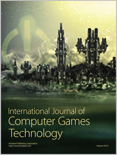
International Journal of Computer Games Technology
Exploring Innovations in Computer GamesInternational Journal of Computer Games Technology, an esteemed publication from HINDAWI LTD, serves as a pivotal platform for scholars and practitioners in the realms of computer graphics, software, and human-computer interaction. Since its inception in 2008 as an open-access journal, it has committed to disseminating cutting-edge research and innovative practices within the gaming technology sector. The journal, identified by its ISSN 1687-7047 and E-ISSN 1687-7055, is based in the United States and boasts a converged publication timeline from 2009 to 2024. Recognized in the 2023 Category Quartiles for its contributions to notable fields, it ranks Q3 in Computer Graphics and Computer-Aided Design, Q4 in Human-Computer Interaction, and Q3 in Software. With its active presence in Scopus rankings, the journal holds commendable positions in multiple categories, indicating a growing impact on the academic community. This journal not only aims to advance knowledge but also encourages collaborative exploration and innovative solutions, making it an essential resource for researchers, professionals, and students dedicated to the evolution of gaming technology.

Cyberpsychology Behavior and Social Networking
Bridging Psychology and Social NetworkingCyberpsychology Behavior and Social Networking is a leading international journal dedicated to the exploration of the intricate relationship between psychology and digital interactions. Published by Mary Ann Liebert, Inc, this esteemed journal boasts a strong impact factor, reflecting its significance in the fields of psychology, communication, and computer science. With a broad scope encompassing topics such as social networking, online behavior, and human-computer interaction, the journal aims to provide a vital platform for researchers, professionals, and students to share innovative research and insights. Recognized as a Q1 journal across multiple categories, including Applied Psychology and Human-Computer Interaction, it ranks impressively among its peers, underscoring its influence in advancing academic discourse. Additionally, the journal offers open access options, enhancing the visibility and accessibility of published work to a diverse audience. As digital technologies continue to evolve, Cyberpsychology Behavior and Social Networking remains at the forefront, fostering scholarly dialogue that navigates the psychological ramifications of our increasingly interconnected digital lives.
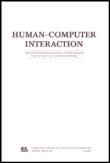
HUMAN-COMPUTER INTERACTION
Innovating the Way We Connect with ComputersHUMAN-COMPUTER INTERACTION is a premier academic journal published by Taylor & Francis Inc, dedicated to the interdisciplinary field of HCI, which explores the dynamic interactions between humans and computers. With its ISSN 0737-0024 and E-ISSN 1532-7051, the journal maintains a strong presence within the academic community and is recognized for its significant impact, holding a commendable impact factor that underscores its relevance. Ranked in the Q1 category for both Applied Psychology and Human-Computer Interaction, it occupies a critical position in Scopus rankings, listed as #15 in Applied Psychology and #11 in Computer Science, Human-Computer Interaction, placing it in the top 6% of relevant fields. Covering a broad spectrum of topics from usability studies to user experience design, the journal aims to facilitate innovative research and provide insights that bridge theoretical frameworks and practical applications. Published since 1985 and continuously evolving, HUMAN-COMPUTER INTERACTION remains an essential resource for researchers, professionals, and students eager to contribute to and benefit from advances in understanding how technology can effectively serve human needs.
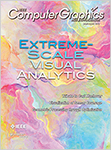
IEEE COMPUTER GRAPHICS AND APPLICATIONS
Shaping the Future of Graphics with Insightful ResearchIEEE Computer Graphics and Applications is a premier journal published by the IEEE Computer Society, focusing on the rapidly evolving fields of computer graphics and computer-aided design. With an established history since 1981, this journal has become a vital platform for disseminating innovative research and applications that bridge theory and practice. It is indexed in Scopus, holding a respectable rank of #49 in Computer Graphics and Computer-Aided Design and #250 in Software, reflecting its significant contribution to the academic community with a notable 54th and 38th percentile, respectively. While it currently operates without open access options, the journal continues to provide valuable insights that cater to researchers, professionals, and students alike, striving to push the boundaries of technology and creativity. With plans to converge until 2024, IEEE Computer Graphics and Applications remains committed to fostering advancements in the discipline, making it an essential resource for those at the forefront of computer graphics innovation.
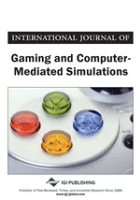
International Journal of Gaming and Computer-Mediated Simulations
Unveiling the Dynamics of Simulation TechnologiesThe International Journal of Gaming and Computer-Mediated Simulations, published by IGI Global, serves as a pivotal platform for the dissemination of cutting-edge research in the realms of gaming and computer-mediated interactions. Established in 2009, it has consistently provided a scholarly space for innovative discussions around the implications, advancements, and societal impacts of gaming technologies and simulations. With an impressive impact factor as it continues to grow within the Q3 category of Computer Science Applications, this journal ranks #491 out of 817 in Scopus, highlighting its significance within an evolving discipline. Featuring contributions from both established and emerging scholars, the journal aims to bridge theoretical knowledge and practical application, thereby nourishing the academic pursuits of researchers, practitioners, and students alike. Access to the journal's rich content is critical for those striving to keep pace in this dynamic field, making it an essential resource for anyone invested in the future of gaming and computer-mediated environments.
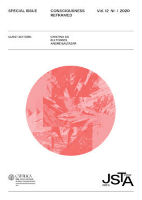
Journal of Science and Technology of the Arts
Illuminating the Synergy Between Art and Technology.The Journal of Science and Technology of the Arts, published by UNIV CATOLICA PORTUGUESA, is a pioneering open access journal dedicated to the interrelation of the arts and scientific advancements. Since its inception in 2009, it has served as a critical platform for disseminating innovative research across various disciplines, including Visual Arts, Performing Arts, Music, and Conservation. With its ISSN 1646-9798 and E-ISSN 2183-0088, the journal operates from Portugal, attracting a diverse international audience. Although it is currently ranked in Q4 for Arts and Humanities (miscellaneous) and Computer Science Applications, it has achieved notable Q3 rankings in Conservation, Music, and Visual Arts and Performing Arts as of 2023. The journal's impact is reflected in its Scopus rankings, which place it in the midst of its peers, showcasing its growing influence. Through its commitment to fostering interdisciplinary dialogue, the Journal of Science and Technology of the Arts is essential for researchers, professionals, and students interested in the innovative integration of arts and technology.